James Ogden Stiles, Jr. died at his home in Coldwater, Kansas, on March 11, 2024. Jim was born on December 11, 1949 to Sue Montfort Stiles and James Ogden Stiles, Sr. of Louisville, Kentucky. He was raised in Louisville, graduated from…
Author: stiles
FLYING OVER MOAB’S PAST (“If I Could Fly Away.”) photos by Jim Stiles (ZX#104)
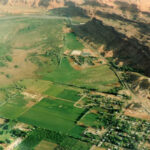
This issue features Moab and Arches and a ways upstream and down the Colorado River. Almost all of them are from the early 1990s thanks to Paul, but a few of the Arches images date back to the late 1970s and early 1980s via those Arches pot patrols.
These photographs are especially notable, because they show just how much the town and the river have changed over the last few decades. So strap yourself in and take a flight…Swanstrom is a damn good pilot…
From 2007: “Brave New West”(The Amenities Boom & Meltdown) w/ 2024 Updates —Jim Stiles (ZX#103)
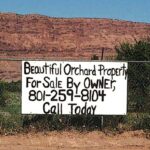
I had been ranting for years about the impacts an Industrial Tourism economy could create. My pleas fell on deaf ears, especially with the mainstream environmental community. Organizations like the Southern Utah Wilderness Alliance (SUWA) embraced the change and even devoted an entire issue of its newsletter praising the amenities economy as a clean, non-polluting way to bring economic prosperity to areas that had previously depended on the extractive industries to survive. What they failed to consider was that while coal mining and oil and gas exploration and ranching could scrape bare the skin of the rural West, a massive monolithic tourism economy would eventually bare and destroy its very soul.
The Legacy of Nasja Begay: Paiute Guide — By Harvey Leake (ZX#102 )
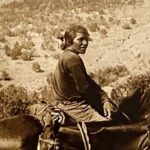
From early times, a tiny community of Paiute Indians made their homes at the bottom of a remote canyon that transects the Arizona/Utah border. Early in 1909, two of them—a father and son—rode eastward on a rocky, fifty-mile-long trail toward Monument Valley in order to patronize a trading post at a place known as Oljato. The father’s name was Mupuutz, which means “Owl” in the Paiute language, although he was better known by the Navajo translation of his name, Nasja (Nd’dshjaa’), or the name the census takers used for him, Ruben Owl. His son was called Nasja Begay (Nd’dshjaa’ Biye’), i.e., Owl’s Son. Nasja was in his early seventies, and Nasja Begay was about eighteen.
The pioneer trading post at Oljato had been established a few years earlier by John and Louisa Wetherill, my great-grandparents, and Clyde Colville, their trading partner. They were quite fluent with the Navajo language and were learning some Paiute as well.
BEFORE TELLURIDE & ASPEN WENT CRAZY: 1950-1980/Photos by Herb Ringer (ZX# 101)
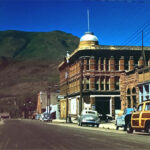
From Edward Abbey’s “The Journey Home”
“The town of Telluride was actually discovered back in 1957, by me, during a picnic expedition into the San Miguel Mountains of southwestern Colorado. I recognized it at once as something much too good for the general public. For thirteen years I kept the place a secret from all but my closest picnicking cronies. No use: I should have invested everything I had in Telluride real estate. In 1970 a foreigner from California named Joseph T. Zoline moved in with $5 million and began the Californica-tion of Telluride. Formerly an honest, decayed little mining town of about good souls, it is now a bustling whore of a ski resort with a population of 1,500 and many more to come. If all goes badly, as planned…
… Men weep, men pray and kneel, but money talks. Money walks and talks and gets things done.
— EA
BITING BUGS & POISON IVY: “Why God?” — Jim Stiles (ZX#100)

I was a newly initiated Boy Scout, officially a Tenderfoot, and had traveled with Troop 246 to a summer Boy Scout camp at Rough River, Kentucky. We had planned a canoe trip for the next day, but early that afternoon, we set up camp in an open field. As I sat in the tall grass chatting with my pals, I suddenly felt an uncomfortable itch emanating from the most sensitive part of the male anatomy. I said nothing at first, and was not about to share my problem with my buddies. Besides, I was a Boy Scout. It was still okay to be stoic, to admire stoicism, and endure discomfort bravely, and quietly, like Gary Cooper or Jimmy Stewart might do. I said nothing…
Arches’ Vintage Wooden Signs (Gone but Not Forgotten) — Jim Stiles (ZX#99)
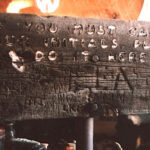
For decades, the iconic routed wooden signs, in national parks across America, were a familiar sight to tourists. They were works of art…
But leave it to the government to find one. Someone in the Department of Transportation, his/her identity lost to history, decided to take a look at the park signs and saw red flags everywhere…
“These signs! These signs are NOT in compliance with federal highway safety standards!!!”
The Irony of Glen Canyon Dam’s Eventual Demise —Jim Stiles (ZX#98)
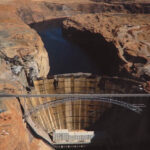
If you didn’t live through the 1950s, there’s a commonly held but false impression that ‘nothing happened’ during the decade… But the decade of the ‘50s initiated the groundwork, literally, for what was to come. After a decade of the Great Depression and four years of world war. Growth was inevitable, but the explosive growth was stunning…
In order for the arid Southwest to grow far beyond anything that could be called “sustainable,” proponents needed two rare commodities for the arid deserts — water and power. Projects like Glen Canyon Dam and the Powell Reservoir were planned and built with that goal in mind.
Damn sustainability…full speed AHEAD.
1906 —THE WETHERILL & COLVILLE TRADING POST: Establishing a Home on the Desert …by Harvey Leake (ZX#97)
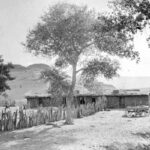
The wisdom of such a move was not evident to the folks back in Mancos. The costs of desert life were loneliness, hardships, and isolation from the security of civilization. Provisions were limited to those that could be hauled in over rough wagon roads from distant supply points, and the many niceties of society were no longer close at hand. Nevertheless, the Wetherills came to relish the change. John was no stranger to the desert, and he had developed a profound appreciation for it. Louisa was getting to know her Navajo neighbors, and the two children—Ben, who was nearly four and Sister, a year younger—were hardy and adaptable.
For Louisa, the experience became transformative.
1950: BEFORE ‘CANYONLANDS’ WAS A PARK…The Other ‘Place No One Knew” by Tug Wilson (ZX#96)
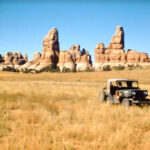
Alan “Tug” Wilson isn’t exactly a household name to most Zephyr readers. But it should be. While he may not be instantly recognizable, many lovers of Canyonlands and Arches National Parks will recognize his father. Tug was blessed to be the only son of Bates Wilson. In 1949, Bates became the first official superintendent of “The Arches,” when it was still a national monument. Just a year after his arrival, Bates was introduced to the vast untouched landscape to the west of Moab— and north and south of the little town as well. The canyon Country of southeast Utah was still an almost untouched landscape, known only to the ranchers and cowboys of Scorup/Sommerville Ranch, and a handful of intrepid explorers. The land lay empty for centuries…
